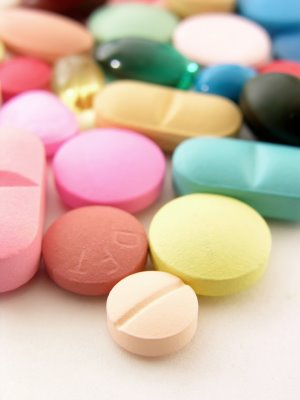Pain Reliever Can Hinder Injury Healing!
Research: your pain reliever can delay healing and cause muscle weakness
 Unfortunately, injuries are part of life. Sports injury, car accidents, on the job, slips falls all are potential causes of injury to the neck, back, shoulders, arms, legs. A common home remedy is to reach for that bottle of anti-inflammatory drugs, such as ibuprofen, to ease the pain and inflammation. Research show that maybe, that is not such a good idea! In fact they can actually slow the healing and make the muscles weaker!
Unfortunately, injuries are part of life. Sports injury, car accidents, on the job, slips falls all are potential causes of injury to the neck, back, shoulders, arms, legs. A common home remedy is to reach for that bottle of anti-inflammatory drugs, such as ibuprofen, to ease the pain and inflammation. Research show that maybe, that is not such a good idea! In fact they can actually slow the healing and make the muscles weaker!
In most cases, injuries involved damage to the soft tissue of our joints: the muscles, tendons and ligaments. Common terms are strains, which affect the muscles and tendons and sprains, which affect the ligaments. These type of injuries cause micro tears in their fibers, setting up inflammation and a complex healing cycle: this is where the anti-inflammatory drugs can cause problems
Normal Healing
The normal healing process occurs in three steps.
- First is the inflammatory step: damaged tissue secretes a complex cocktail of chemicals into the surrounding area. Hence, the inflammation, swelling and pain.
- Second is the regenerative step: the body begins to deposit fibrous healing tissue into the damaged structure. This is done in an attempt to “patch up” the micro tears.
- Third is the remodeling step: the body attempts to align the “patch” material with the normal fibers of the muscle, tendon or ligament. The goal is to maintain flexibility and strength.
The use of anti-inflammatory drugs can interfere with the first two steps, resulting in incomplete healing and weakened muscles.
There are many over the counter anti-inflammatory drugs, common ones include: Bayer, Bufferin, Excedrin, Advil, Motrin, Doan’s Pills, and many more (see list). These drugs are in a class called NSAIDS – non-steroidal anti-inflammatory drugs. They have two main functions: decrease pain and inflammation.
While they do their job quite well, part of their affect is to inhibit a part of the necessary healing process. They decrease the body’s ability to cleaning out of the injured dead tissue and the regeneration of new healthy tissue.
In one study using an NSAID, it was found that 28 days after the injury the regeneration process was still delayed and the muscle fibers were weaker due to incomplete healing. (1)
In another study, revealed that after 4 days of NSAID use, there was very little muscle regeneration and the muscle strength was only 40% of normal. (2)
And yet a third study using ibuprofen revealed a 300% DECREASE in tendon strength at 4 weeks! (3)
In short, NSAIDS like ibuprofin can actually delay or hinder the healing of soft tissue. This results in incomplete and weakened muscle, ligaments or tendons.
The next time you find yourself injured, think twice before you reach for the pain reliever! Why not try a natural approach: try chiropractic!
1. (Almekinders, L. An in vitro investigation into the effects of repetitive motion and nonsteroidal anti-inflammatory medication on human tendon fibroblasts. American Journal of Sports Medicine. 1995; 23:119-123.) 2. (Greene, J. Cost-conscious prescribing of nonsteroidal anti-inflammatory drugs for adults with arthritis. Archives of Internal Medicine. 1992; 152:1995-2002.) 3. (Kulick, M. Oral ibuprofen: evaluation of its effect on peritendinous adhesions and the breaking strength of a tenorrhaphy. The Journal of Hand Surgery. 1986; 11A:100-119.)